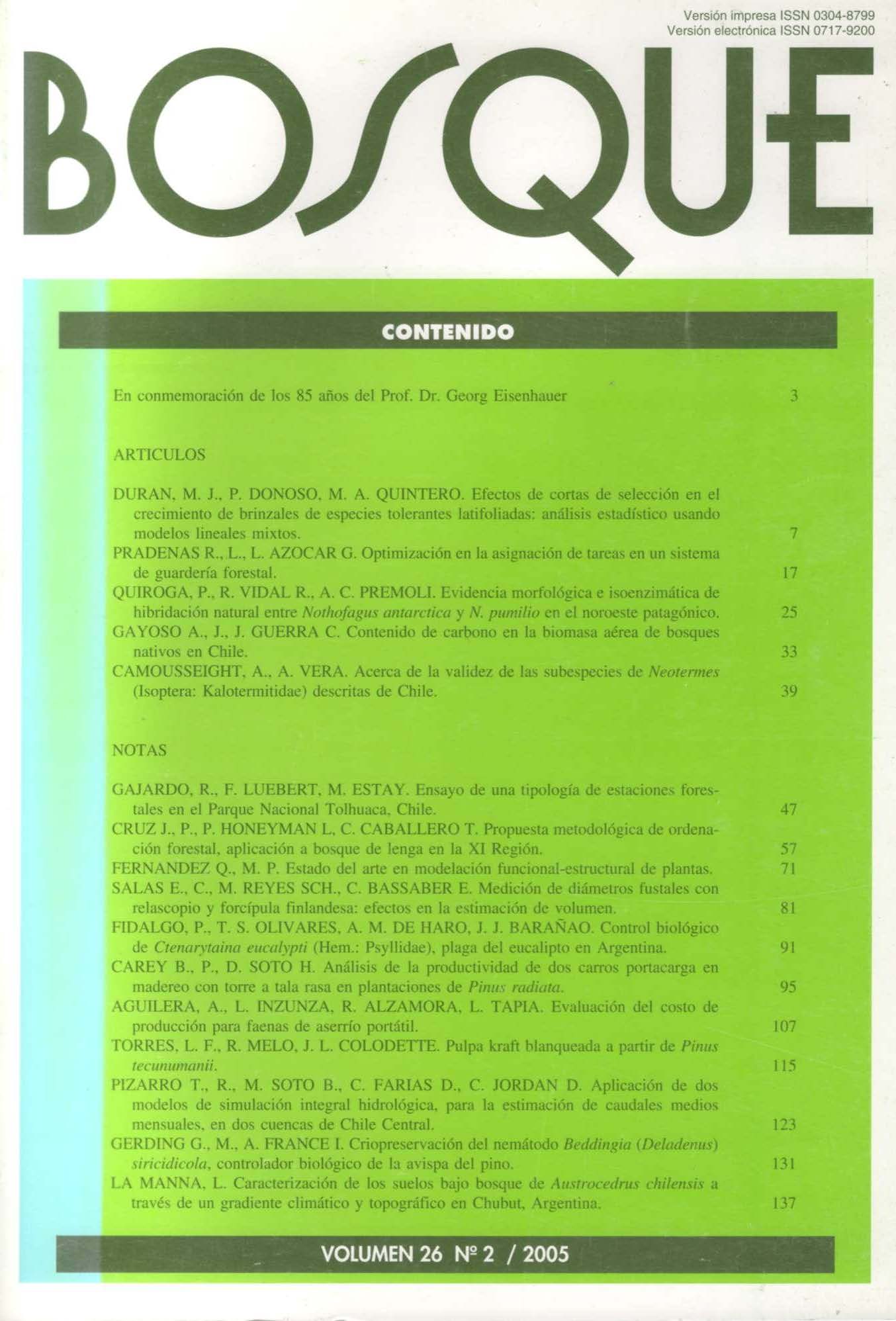Ensayo de una tipología de estaciones forestales en el Parque Nacional Tolhuaca, Chile
Contenido principal del artículo
Resumen
Se establece una tipología de estaciones forestales para el Parque Nacional Tolhuaca, Chile. El concepto de estación forestal se refiere a una unidad ambiental homogénea, definida a través del conjunto de sus caracteres físicos y bióticos. En orden a establecer la tipología de estaciones se cumplieron tres etapas metodológicas, las cuales son: la definición de grupos fitosociológicos, grupos fitoecológicos y tipos de ambiente físico o biótopos. Los grupos fitosociológicos determinados están distribuidos en la clase Wintero-Nothofagetea, con tres asociaciones, y en la clase Nothofagetea pumilionis-antarcticae, también con tres asociaciones. Los resultados obtenidos con el uso del análisis factorial de correspondencias permiten establecer cuatro grupos fitoecológicos, correspondientes a bosque caducifolio mesófilo, con especies: laurifolias, bosque caducifolio micrófilo, bosque siempreverde micrófilo y matorral caducifolio micrófilo, con especies siempreverdes. Las mejores variables determinadas para la definición de los biótopos son altitud y relieve, ambos factores con gran influencia en el clima local. El área estudiada se ubica dentro del macroclima templado y en ella fueron definidos los siguientes pisos: colino, montano inferior y montano superior. La tipología de estaciones forestales propuesta consiste en catorce unidades.

